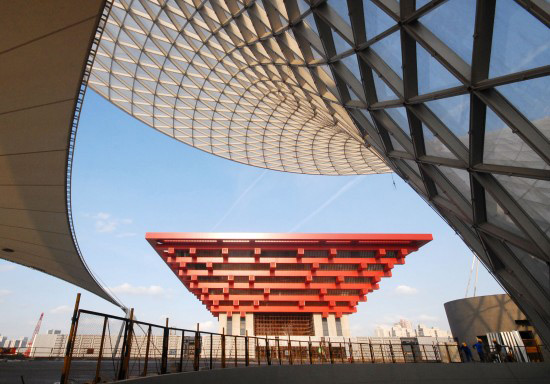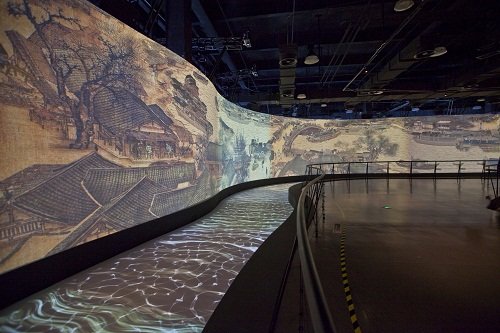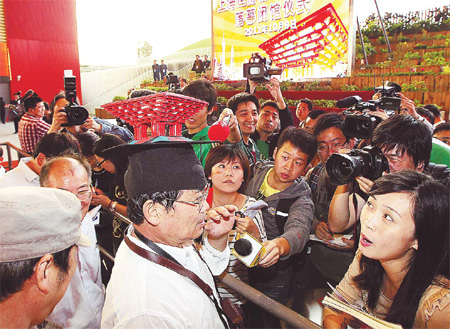The China Pavilion, the top attraction of Expo 2010 Shanghai, closed on Oct. 9, leaving behind tearful staff who worked there for more than 18 months.
Due to tremendous visitor interest, the inverted pyramid-like structure reopened twice after the 184-day fair officially ended on Oct 31, 2010.
Its main structure will continue to be used as a public culture venue.
As of Oct. 9, the 2-billion-yuan ($314 million) structure had received 17.5 million visitors since it opened along with the Expo on May 1, 2010. More than 50,000 tourists on average surged through it on a typical day of the Expo.
The pavilion’s highlights included an animated version of an ancient painting called Riverside Scene at Qingming Festival, excursion trains that gave a glimpse of China’s achievements in urban development, and the bronze chariot and horses sculpture unearthed in the 1980s along with the world-renowned Terracotta Warriors, which date back to the Qin Dynasty (BC 221-206).
“The pavilion ran steadily on its last exhibition day, when about 30,000 people toured it,” said Pang Jie, speaking on behalf of the Expo Shanghai Group, which has been operating the Expo venues since the fair ended. “All workers are sticking to their positions, to ensure a successful end,” she said.
Hua Xuyin, a local visitor, drew a lot of attention on Oct. 9 by wearing a home-made hat in the shape of the pavilion. “The Shanghai people turned in a ‘successful answer sheet’ for the test on the Expo and its pavilions,” said the retired worker. “So I made the hat with a PhD cap to symbolize that we ‘graduated’ successfully from the Expo school.”
It was the pavilion staff members who had the hardest time saying good-bye. Qian Ting, a 20-year-old receptionist at the pavilion, was one of the staff members who greeted visitors in tears on the last exhibition day. “The days I worked for the pavilion meant a lot to me,” she said.
The exhibit will start to be torn down from Oct. 10, a process that will take several months.
The animated version of Riverside Scene at Qingming Festival will be shown in Taiwan again later this month and Singapore in December.
(Source: China Daily)
 |
| China Pavilion with the inverted pyramid-like structure |
Its main structure will continue to be used as a public culture venue.
As of Oct. 9, the 2-billion-yuan ($314 million) structure had received 17.5 million visitors since it opened along with the Expo on May 1, 2010. More than 50,000 tourists on average surged through it on a typical day of the Expo.
The pavilion’s highlights included an animated version of an ancient painting called Riverside Scene at Qingming Festival, excursion trains that gave a glimpse of China’s achievements in urban development, and the bronze chariot and horses sculpture unearthed in the 1980s along with the world-renowned Terracotta Warriors, which date back to the Qin Dynasty (BC 221-206).
 |
| Painting - Riverside Scene at Qingming Festival |
Hua Xuyin, a local visitor, drew a lot of attention on Oct. 9 by wearing a home-made hat in the shape of the pavilion. “The Shanghai people turned in a ‘successful answer sheet’ for the test on the Expo and its pavilions,” said the retired worker. “So I made the hat with a PhD cap to symbolize that we ‘graduated’ successfully from the Expo school.”
 |
| A home-made hat in the shape of China Pavilion |
The exhibit will start to be torn down from Oct. 10, a process that will take several months.
The animated version of Riverside Scene at Qingming Festival will be shown in Taiwan again later this month and Singapore in December.
(Source: China Daily)
No comments:
Post a Comment